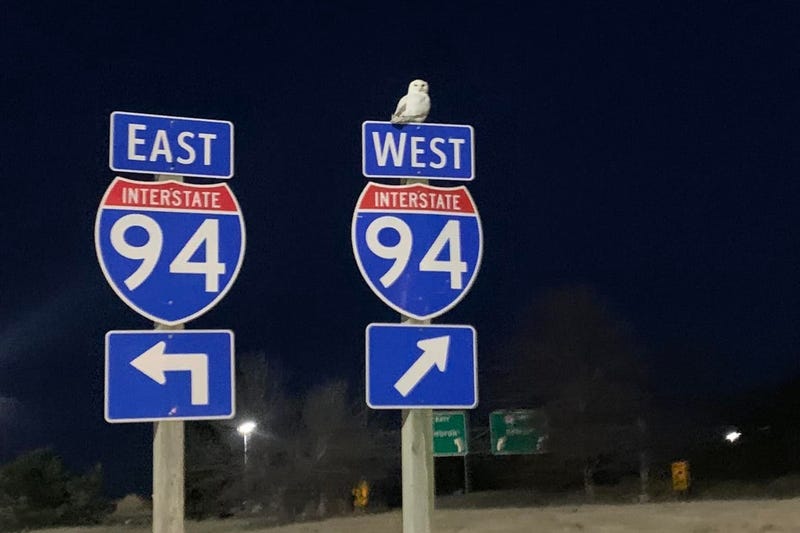
(WWJ) While you have surely heard people complaining about the weather in Michigan lately... these guys are loving it.
Winter is the only time of year that snowy owls can be found in our state, flying down from their native Arctic regions of northern Canada and Eurasia to seek relatively warmer weather, and new sources of food.
Once an extremely rate sight this far south, these eye-catching white birds of prey have been spotted more and more in the Metro Detroit area in recent years. However, according to Project Snowstorm, the largest research program in the U.S. focusing on the snowy owl, there have been fewer sightings in the Midwest so far this season.
Experts say this could be a result of difficult breeding season due to a drop in the population of snowy owls’ favorite summetime food source: the lemming.
But Project Snowstorm co-director Scott Weidensaul said the lemming is far from the only thing a snowy owl likes to eat.
Speaking to WWJ's Zach Clark for The Daily J podcast, Weidensaul noted that snowy owls are among the biggest in the owl family — making them pretty impressive predators.
"They'll eat small mammals, like mice and rats and voles. They'll eat rabbits, they'll eat hares, they'll eat prairie birds like sharp-tailed grouse and ring-necked pheasants. They eat a lot of water birds — especially if they're wintering along the Great Lakes."
"They're incredibly powerful," he added. "A snowy owl is easily capable of catching a bird significantly larger than itself. I mean, occasionally something as large as a great blue heron. That would be a little bit like me deciding I was going to go catch a deer and kill it with my teeth!"
So, with all that in mind, does that make snowy owls a danger to pets and humans in Metro Detroit?
Clark posed that question to James Manley, Executive Director of the Skegemog Raptor Center, a nonprofit wildlife rescue in Grand Traverse County.
"They're certainly not gonna attack humans; they view us as much larger predators," he said. "Of course, if a bird was in distress and needed to be rescued, then yes, they can in fact hurt you and you would want to take precautions to protect yourself."
When it comes to pets, Manley said the chances of a snowy owl going after a cat or small dog is not impossible, but highly unlikely. "A bird would have to be pretty young and really, really hungry to go after something like that," he said.
The Michigan Department of Natural Resources notes that when snowy owls travel to populated areas in the winter, these new places present unfamiliar threats like curious humans, rodent poison, and collisions with cars, airplane and power lines.
To keep the best interests of these majestic creatures in mind, state wildlife experts offer these tips for viewing snowy owls while keeping them stress-free and safe:
Give snowy owls space. A good rule of thumb is to view wildlife from a distance, using binoculars or a scope, rather than approaching. If you “flush” an owl, or cause it to move to a new area, you are too close and need to back away or leave. Even if the bird doesn’t seem to display signs of fear, it can still be scared and stressed by your presence.
Don’t lure owls with audio recordings. While it might be tempting to use audio recordings to attract snowy owls closer to you, hearing another owl’s call — even a recorded one — can be stressful for the bird. Snowy owls are solitary and territorial, and the call of another bird can put them on high alert.
Leave "live baiting" to the pros. Scientists and wildlife rehabbers use live bait like mice to entice owls for banding, relocation and rehabilitation. However, this practice can be dangerous for owls when it’s done by photographers, birders, or others. Baited owls learn to associate people with food, and may be drawn to dangerous places – like roads or airports – to find humans.
Submit your eBird observations to scientists but keep them hidden from the public. To prevent large gatherings of people and limit disturbing snowy owls, keep your observations private. Here’s a step-by-step guide on how to keep your eBird checklist hidden.


